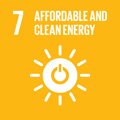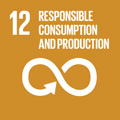- Docente: Annarita Ferrante
- Credits: 3
- SSD: ICAR/10
- Language: English
- Moduli: Annarita Ferrante (Modulo 1) Marco Pasquini (Modulo 2)
- Teaching Mode: Traditional lectures (Modulo 1) Traditional lectures (Modulo 2)
- Campus: Bologna
- Corso: Second cycle degree programme (LM) in Building Engineering -Architecture (cod. 5697)
Learning outcomes
At the end of the course the student will know the relationship between the construction and spatial-distributive organization and the formal resolution in architecture, taking into account the specific environmental context, the history of construction and the evolution of structural types .
Course contents
Starting from considerations on the challenging issues related to the energy efficiency in historical buildings, the course lessons moves up to illustrate new buildings’ design and different cases of deep transformation for the buildings built after the second world war, particularly from the ‘60s and ’80s. With reference to more recently built heritage non-energy-related benefits' role in urban regeneration and building retrofit is illustrated.
The substantial increase of the architectural and urban quality is the main mission, along with the growth of real estate value of the existing buildings through significant energy and architectural transformations. Results from EU projects will be discussed and analyzed, along with regulative densification policy, to achieve climate neutrality in the existing built environment while contrasting the urban sprawl and soil sealing.
Teaching methods
Lessons and class discussion. Collective revision of the design projects and interactions
Assessment methods
Project design deliverables
Teaching tools
Powerpoint presentation; interactive LIM,
Office hours
See the website of Annarita Ferrante
See the website of Marco Pasquini
SDGs



This teaching activity contributes to the achievement of the Sustainable Development Goals of the UN 2030 Agenda.
